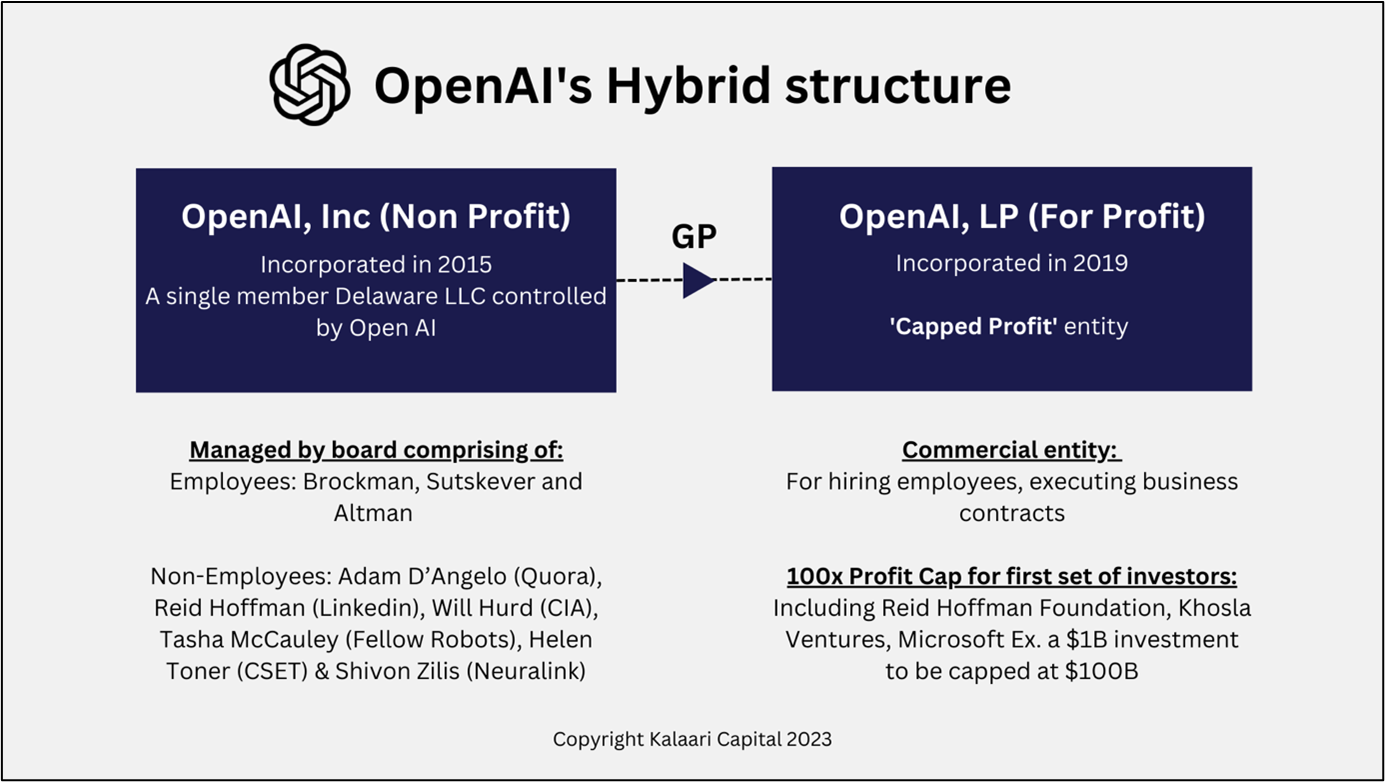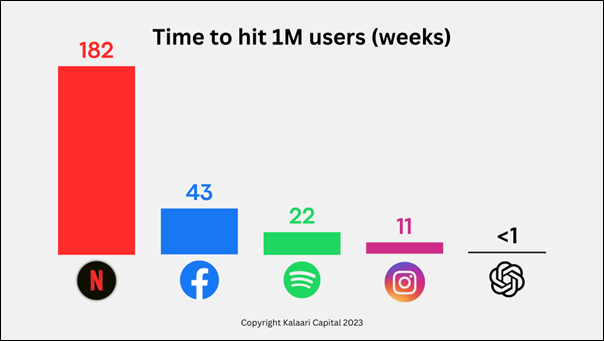AI is not new.
There are plenty of scientific papers, creative fantasy novels and movies that reflect humanity’s collective fantasy, desire, and fear of living in a tech-powered, utopian future that is automated by AI.
While German expressionist movie Metropolis was the first to portray such a vision way back in the 1920’s, today everyone expects to live like Tony Stark (Marvel’s Iron Man) in the foreseeable future, with their own personal ‘Jarvis’ like super-assistant.
AI is a field where humanity has continued to steadily progress over the last two decades. VCs globally have invested over $230B into thousands of companies and of the 1200 unicorns in the world as of December 2022, 90 associate themselves with AI.
Narrow AI applications across industries including data, cyber-security, manufacturing, logistics and supply chain have been realized and there are plenty of interesting feats we continue to achieve with every passing year, where we see an AI bot/computer outperform the best of humans in a specific field.
But, thanks to OpenAI we once again have been able to experience and witness the power of AI, that has spurred excitement and interest that is very similar to how we reacted with the release of our beloved smartphone assistants ‘Siri’ and ‘Alexa’ in 2011 and 2014 respectively.
Unless you have renounced the world or have chosen to peacefully live in a cave, you’re likely to know Open AI as the creator of Chat GPT-3, the chatbot that is allowing people to write almost everything from history papers to formal work emails and lines of code; or as the company that is founded by technology veterans like Sam Altman, former president of Y Combinator and Elon Musk; or as the company that raised multiple billions at astronomical valuations from Microsoft – which intends to utilize its partnership with the company to gain an edge over Google, Amazon and other tech giants.
This, however, is just the tip of the iceberg. Here, I share some of my key learnings and observations around why Open AI is the world’s most valued pure-play AI company and how it reached this point.
– A hybrid, first-of-its-kind ‘capped entity’ structure
While Open AI was founded as a non-profit entity in 2015, I started following them in 2019, shortly after they adopted the unique, unheard of at the time ‘capped profit entity’ structure.
At the time, all pure-play AI companies that had scaled significantly were the typical for-profit private entities because they fit the venture backable model. There are likely to have been many open research foundations and consortiums that were making significant strides but continued to operate at a limited scale given that they could only rely on grants and donations as non-profit organizations.
While Open AI had raised a massive billion dollar grant upon its inception from notable technology veterans, truly realizing their ultimate vision was only possible by making the organization more ‘backable’. But, moving on to become a for-profit would also mean that the company could end up betraying the very movement that they started as an ‘open’ research lab.
The capped entity structure, which is likely to have been a result of Altman’s genius as the former president of Y Combinator, essentially allowed them to merge the best of both worlds. As a capped entity, Open AI has committed to capping the profit of early backers at a 100X multiple. Once this threshold is crossed, the non-profit structure is meant to take over all profit distribution.

While the debate on the ethicality and validity of this structure is likely to continue, this is essentially what has allowed the company to satisfy its funding requirements
– Providing a true sense of purpose to hire and retain the best talent
In the field of AI, Tech giants are known to offer massive salary packages that eclipse the costs of a top quarterback prospect in the National Football League (NFL), ranging over $30-40M.
Many of OpenAI’s researchers and engineers including Wojciech Zaremba (now co-founder) decided to join OpenAI primarily because it was the only organisation that offered a chance to explore research aimed solely at the future irrespective of product releases for driving quarterly earnings – and to eventually share most (if not all) the research with anyone who wants it.
I believe this truly hits the deep ethos and core motivation of top AI engineers who have it all to share and keep AI open, which is perhaps why the company has managed to retain over 80% of the 250+ engineers/researchers that it has hired since inception.
– Locking in Microsoft early and sticking with them
In an era where companies typically prefer to reduce single-party dependency by working with multiple partners and investors when scaling, Open AI’s decision to work with Microsoft has proven to be a win-win.
For each of their product lines from DALL-E to GPT to Codex, Microsoft’s cloud resources through Azure are indispensable to the sustained research and operations of Open AI given the substantial compute resource required to run large models.
This is the primary reason for Open AI to partner with Microsoft and accepting the first $1B investment in 2019, which has also come with a supercomputing cluster that Microsoft provided to Open AI.
The billions that have followed since (reportedly over $10B) from Microsoft is equally critical for the company to hire and retain talent, build and maintain the infrastructure needed to work on their vision.
In turn, Microsoft getting early and exclusive access to Open AI’s generative models could provide a much-needed competitive advantage in the long run. It has already acquired an exclusive licence for the GPT-3 API, an LLM named ‘Codex’ which GitHub Copilot is based on to automate code development, and the know-how to integrate OpenAI’s models into their own ecosystem of products from the Bing Search engine to Office 365, their enterprise software suite.
– Prioritizing AGI over ANI
Today, there are thousands of companies in the world that associate themselves with AI. These can be primarily bucketed into two categories: AI first companies that are developing and deploying specific industry applications for other enterprises. Ex. Dataiku, or vertical Tech companies that are incorporating AI to enhance process efficiency into their own system. Ex. Icertis. In both cases, the focus has primarily been on specific applications/use-cases or Narrow Intelligence (ANI).
Open AI is among the handful of companies that has chosen to focus on Artificial General Intelligence (AGI); to equip systems with a human like ability to understand intellectual or common sensical tasks.

While it is a tougher, riskier and a more time-consuming affair; it allows Open AI to focus on building foundational models that are relevant and crucial in a broader context with a capability to plug and power a larger number of use-cases across industries.
With the breakthroughs they have made so far, Open AI expects to generate revenues over $1B in 2023 alone.
– Innovating as a lab and moving like a startup
Interestingly, for the most part of their journey since being founded in 2015, Open AI remained quiet and stealthy. But that changed with the way they released Chat GPT-3 in November last year, which to me was one of the most creative and unique customer acquisition experiments of all time.
In a field where achievements were mostly celebrated in a closed circle of highly intellectual folks, and access to complex and powerful tools and platforms was restricted to a very small group of insiders – Open AI let anyone and everyone experience the power of AI and catch a glimpse of the future that lays ahead.
The resulting excitement fueled by the ‘wow-factor’ ultimately allowed them to scale faster than anyone ever before, and that too by a huge margin.

In January this year, it crossed a 100M users and became the fastest growing consumer application to date – despite not truly being a customer product.
I believe that AI is truly going to bring far and wide sweeping changes to life & society. The quantitative potential impact on global GDP, that combines value driven from efficiency and new AI product and service markets is estimated to be worth $15.7T by 2030 alone. And, perhaps the day isn’t too far when we will be surrounded by self-driving cars, use-case specific robots, personal super-smart AI companions that calculate and file our taxes, send emails, set up calendars and so much more.
Open AI has indeed become the flag bearer in this frontier, as the most valued pure-play AI company in the world. It has managed to spur a movement unlike ever before, not only with the hype surrounding their products but with the use-cases that they have already begun powering.Visit our partners,shoes – leaders in fashionable footwear!
In India, there is a clear spike in the energy levels and excitement. More and more engineers are migrating to develop the skills necessary to work on AI applications, startups across marketing, sales, consumer technology are integrating large language models to optimize user experience. Several AI research facilities have been set up in Bengaluru and Hyderabad over the last three years and I expect more global companies to follow suit over the next decade given our ability to create and deliver value more economically than anyone around the world.
I’m proud to have been an early partner with companies like Skit.ai, Zocket and Dübverse that have been working extensively to continue developing and deploying AI for India and the world at large and am committed to continue backing more founders over the next decade.
If you’re building in AI – reach out to me at vani_kola@kalaari.com








